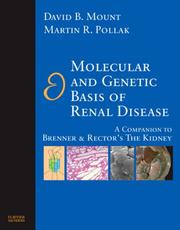| Listing 1 - 10 of 54 | << page >> |
Sort by
|
Book
Year: 2008 Publisher: Oslo : Norwegian Knowledge Centre for the Health Services,
Abstract | Keywords | Export | Availability | Bookmark
 Loading...
Loading...Choose an application
- Reference Manager
- EndNote
- RefWorks (Direct export to RefWorks)
Background Breast cancer is the most commonly diagnosed cancer in women. In 2005, there were about 3000 incident cases of breast cancer in Norway. Ovarian cancer is less common, with about 400 cases each year. Although breast cancer is relatively common, only about 5-10% of cases are due to inheritance of highly penetrant cancer susceptibility genes. The genes are also associated with an increased risk of ovarian cancer. The two main genes that confer susceptibility to breast and ovarian cancer are the BRCA1 gene and the BRCA2 gene. The mutations in these genes are associated with both hereditary breast cancer and hereditary ovarian cancer. One characteristic of inherited breast and ovarian cancer is that cancer usually appears at a younger age. There is a question if genetic testing can reduce the incidence and morbidity of cancer more than the existing strategy based on documenting families with an inherited predisposition to cancer. The Directorate for Health and Social Affairs has asked the Norwegian Knowledge Centre for the Health Services to summarize the documentation of the genetic testing of BRCA1 and BRCA2 and the clinical outcome of the testing. Methods We have performed a search for systematic reviews in Cochrane Library and Health technology Assessment databases until September 2007. Results Data has been gathered from four systematic reviews that have summarised published literature on genetic testing for BRCA1 and BRCA2 for breast and ovarian cancer. BRCA1 and BRCA2 are very large genes. Since the cloning of BRCA1 and BRCA2, more than a thousand mutations have been identified in these genes. From the published literature, there is no compelling evidence to suggest that one genetic test performs better than another. To ensure a full mutation screen, more than one method needs to be used. Different populations have different mutations. Hence, the type of mutation analysis required often depends on population or subpopulations. Individuals from families with known mutations can more easily be tested specifically for them. Populations where specific BRCA mutations are clustered because of a common ancestor are called founder populations. Cancer risk in family history risk groups are estimated by determining the prevalence of the mutation and its penetrance for breast and ovarian cancer. The prevalence of mutations varies according to the geographic and ethnic origin(s) of the population. Few direct measures of the prevalence of clinically important BRCA1 or BRCA2 mutations in a general population have been published. Models have estimated the prevalence to be about 1 in 397 in a general population. The systematic reviews find that many (up to 36 %) women with breast cancer who are mutation carriers report no family history of breast or ovarian cancer. A small number of clinically significant BRCA1 and BRCA2 mutations have been found repeatedly in different families, such as the four founder mutations most common in the Norwegian population. The prevalence of each mutation differs according to different parts of the country. The penetrance or cumulative lifetime risk of breast cancer in women who carry these inherited gene mutations is estimated to 65 % for BRCA1 and 45 % for BRCA2, and these cancers often occur at a younger age. The penetrance for ovarian cancer in women with BRCA1 mutations is estimated to be 39 % and is slightly lower, 11 %, in women who carry BRCA2 gene mutations. The cumulative lifetime risk of breast or ovarian cancer in Norwegian women who carry one of the four BRCA1 founder mutations is approximately 58 % (51-66 %). Increased surveillance, chemoprevention and prophylactic surgeries are standard options for the effective medical management of mutation carriers. Prophylactic surgery was associated with a reduced risk of breast and ovarian cancers in short term cohort studies. However, optimal management of female carriers who choose to undergo prophylactic surgeries is still poorly understood. International guidelines recommend testing for mutations only when an individual has personal or family history features suggestive of inherited cancer susceptibility, the test can be adequately interpreted, and results will aid in management. Genetic counselling is recommended prior to testing. Conclusion There exist several genetic tests for BRCA gene mutations; no test can detect all mutations in BRCA1 or BRCA2 genes. Testing primarily benefits families in which a BRCA1/2 mutation has been discovered. Individuals from Norwegian families with known mutations can easily be tested specifically for that mutation. There are still limited data on the appropriate medical management for BRCA mutation carriers, and more studies are needed to resolve this.
Book
Year: 2008 Publisher: Oslo : Norwegian Knowledge Centre for the Health Services,
Abstract | Keywords | Export | Availability | Bookmark
 Loading...
Loading...Choose an application
- Reference Manager
- EndNote
- RefWorks (Direct export to RefWorks)
Background Breast cancer is the most commonly diagnosed cancer in women. In 2005, there were about 3000 incident cases of breast cancer in Norway. Ovarian cancer is less common, with about 400 cases each year. Although breast cancer is relatively common, only about 5-10% of cases are due to inheritance of highly penetrant cancer susceptibility genes. The genes are also associated with an increased risk of ovarian cancer. The two main genes that confer susceptibility to breast and ovarian cancer are the BRCA1 gene and the BRCA2 gene. The mutations in these genes are associated with both hereditary breast cancer and hereditary ovarian cancer. One characteristic of inherited breast and ovarian cancer is that cancer usually appears at a younger age. There is a question if genetic testing can reduce the incidence and morbidity of cancer more than the existing strategy based on documenting families with an inherited predisposition to cancer. The Directorate for Health and Social Affairs has asked the Norwegian Knowledge Centre for the Health Services to summarize the documentation of the genetic testing of BRCA1 and BRCA2 and the clinical outcome of the testing. Methods We have performed a search for systematic reviews in Cochrane Library and Health technology Assessment databases until September 2007. Results Data has been gathered from four systematic reviews that have summarised published literature on genetic testing for BRCA1 and BRCA2 for breast and ovarian cancer. BRCA1 and BRCA2 are very large genes. Since the cloning of BRCA1 and BRCA2, more than a thousand mutations have been identified in these genes. From the published literature, there is no compelling evidence to suggest that one genetic test performs better than another. To ensure a full mutation screen, more than one method needs to be used. Different populations have different mutations. Hence, the type of mutation analysis required often depends on population or subpopulations. Individuals from families with known mutations can more easily be tested specifically for them. Populations where specific BRCA mutations are clustered because of a common ancestor are called founder populations. Cancer risk in family history risk groups are estimated by determining the prevalence of the mutation and its penetrance for breast and ovarian cancer. The prevalence of mutations varies according to the geographic and ethnic origin(s) of the population. Few direct measures of the prevalence of clinically important BRCA1 or BRCA2 mutations in a general population have been published. Models have estimated the prevalence to be about 1 in 397 in a general population. The systematic reviews find that many (up to 36 %) women with breast cancer who are mutation carriers report no family history of breast or ovarian cancer. A small number of clinically significant BRCA1 and BRCA2 mutations have been found repeatedly in different families, such as the four founder mutations most common in the Norwegian population. The prevalence of each mutation differs according to different parts of the country. The penetrance or cumulative lifetime risk of breast cancer in women who carry these inherited gene mutations is estimated to 65 % for BRCA1 and 45 % for BRCA2, and these cancers often occur at a younger age. The penetrance for ovarian cancer in women with BRCA1 mutations is estimated to be 39 % and is slightly lower, 11 %, in women who carry BRCA2 gene mutations. The cumulative lifetime risk of breast or ovarian cancer in Norwegian women who carry one of the four BRCA1 founder mutations is approximately 58 % (51-66 %). Increased surveillance, chemoprevention and prophylactic surgeries are standard options for the effective medical management of mutation carriers. Prophylactic surgery was associated with a reduced risk of breast and ovarian cancers in short term cohort studies. However, optimal management of female carriers who choose to undergo prophylactic surgeries is still poorly understood. International guidelines recommend testing for mutations only when an individual has personal or family history features suggestive of inherited cancer susceptibility, the test can be adequately interpreted, and results will aid in management. Genetic counselling is recommended prior to testing. Conclusion There exist several genetic tests for BRCA gene mutations; no test can detect all mutations in BRCA1 or BRCA2 genes. Testing primarily benefits families in which a BRCA1/2 mutation has been discovered. Individuals from Norwegian families with known mutations can easily be tested specifically for that mutation. There are still limited data on the appropriate medical management for BRCA mutation carriers, and more studies are needed to resolve this.

ISBN: 1282544071 9786612544071 0199712166 9780199712168 9780195341515 0195341511 0197708293 Year: 2008 Volume: 55 Publisher: Oxford New York Oxford University Press
Abstract | Keywords | Export | Availability | Bookmark
 Loading...
Loading...Choose an application
- Reference Manager
- EndNote
- RefWorks (Direct export to RefWorks)
Genes are important modifiers of the human response to drugs, hormones, and toxins. In this second edition of 'Pharmacogenetics', Weber brings together laboratory methods and epidemiologic studies in defining the role of heredity in human drug response.
Pharmacogenetics. --- Pharmacology --- Biochemical genetics --- Genetic aspects --- Pharmacogenetics
Periodical
Year: 2008 Publisher: [Washington, D.C.] : U.S. Dept. of Agriculture, Agricultural Research Service
Abstract | Keywords | Export | Availability | Bookmark
 Loading...
Loading...Choose an application
- Reference Manager
- EndNote
- RefWorks (Direct export to RefWorks)
Book
ISBN: 1281140112 9786611140113 0387740724 0387740716 1441944869 Year: 2008 Publisher: New York : Springer,
Abstract | Keywords | Export | Availability | Bookmark
 Loading...
Loading...Choose an application
- Reference Manager
- EndNote
- RefWorks (Direct export to RefWorks)
Cardiac aging, like aging in general, is a complex process. Numerous cellular and molecular changes contribute to the expression of the multiple phenotypes of aging, "the different faces" of cardiac aging. In this book, the genetic and molecular basis of cardiovascular aging will be discussed. In addition, a comprehensive assessment of the bioenergetic changes that occur in human and animal models of cardiac aging as well as current diagnostic and future therapeutic modalities will be undertaken. José Marín-García is Director, The Molecular Cardiology and Neuromuscular Institute, Highland Park, New Jersey.
Heart --- Aging. --- Diseases --- Molecular aspects. --- Genetic aspects. --- Cardiology. --- Internal medicine

ISBN: 1437710379 1416002529 1336235136 9781437710373 9781416002529 Year: 2008 Publisher: Philadelphia Saunders/Elsevier
Abstract | Keywords | Export | Availability | Bookmark
 Loading...
Loading...Choose an application
- Reference Manager
- EndNote
- RefWorks (Direct export to RefWorks)
This companion to Brenner and Rector's The Kidney offers a state-of-the-art summary of the most recent advances in renal genetics. Molecular and Genetic Basis for Renal Disease provides the nephrologist with a comprehensive look at modern investigative tools in nephrology research today, and reviews the molecular pathophysiology of the nephron as well as the most common genetic and acquired renal diseases. A comprehensive clinical review of Medelian renal disease is also be included.Detailed review of the molecular anatomy and pathophysiology of the nephron that provides relevant bas
Kidneys --- Diseases --- Genetic aspects. --- Molecular aspects. --- Abdomen --- Urinary organs --- Nephrology
Book
ISBN: 9783805585200 Year: 2008 Publisher: Basel ; New York : Karger,
Abstract | Keywords | Export | Availability | Bookmark
 Loading...
Loading...Choose an application
- Reference Manager
- EndNote
- RefWorks (Direct export to RefWorks)
Neurofibromatoses --- Neurofibromatoses --- Neurofibromatosis --- Neurofibromatosis. --- genetics. --- physiopathology. --- Genetic aspects.
Periodical
Year: 2008 Publisher: Washington, D.C. : U.S. Dept. of Agriculture, Agricultural Research Service
Abstract | Keywords | Export | Availability | Bookmark
 Loading...
Loading...Choose an application
- Reference Manager
- EndNote
- RefWorks (Direct export to RefWorks)
Porcine reproductive and respiratory syndrome --- Proteins --- Genetic aspects --- United States.

ISBN: 1585622796 9781585622795 Year: 2008 Publisher: Washington, DC : American Psychiatric Pub.,
Abstract | Keywords | Export | Availability | Bookmark
 Loading...
Loading...Choose an application
- Reference Manager
- EndNote
- RefWorks (Direct export to RefWorks)
Adolescent Development. --- Adolescent psychopathology --- Adolescent psychopathology --- Adolescent. --- Child Development. --- Child psychopathology --- Child psychopathology --- Child. --- Mental disorders --- Psychopathology. --- Environmental aspects. --- Genetic aspects. --- Environmental aspects. --- Genetic aspects. --- etiology.
Book
ISBN: 1281491659 9786611491659 354075203X 3540752021 3642094457 Year: 2008 Publisher: Berlin : Springer,
Abstract | Keywords | Export | Availability | Bookmark
 Loading...
Loading...Choose an application
- Reference Manager
- EndNote
- RefWorks (Direct export to RefWorks)
This monograph deals with the impact of classical genetics in immunology, providing examples of how large immunological questions were solved, and new fields opened to analysis through the study of phenotypes, either spontaneous or induced. As broad as biology has become, there are those who do not fully understand what the genetic approach is, and how it differs fundamentally from most of the methods available to natural scientists. They may hold the opinion that genetics has run its course since Mendel read his paper on peas in 1865. “Why bother with classical genetics,” they may ask. “Won’t all genes be knocked out soon anyway?” Or they are intimidated by genetics, with its heavy reliance on model organisms that seem so alien. “What has C. elegans to do with me?” the questioning might go. “It doesn’t even have lymphocytes. ” Such skeptics may be unaware that the mouse is fast becoming as tractable a model organism as the fly, and that humans may not be too far behind. So I would like to introduce the topic with a few words about the power of genetics, and why it has contributed so much to immunology, and to biology in general. Genetics, as the word is used here, is not merely the science of heredity, but much more than that. It is the science of exceptions: the science that takes note of heritable variation and seeks to explain it at the most fundamental level.
Immunogenetics. --- Genetics --- Immunity --- Immunology --- Serology --- Immunological aspects --- Genetic aspects --- Immunology. --- Immunobiology --- Life sciences
| Listing 1 - 10 of 54 | << page >> |
Sort by
|

 Search
Search Feedback
Feedback About UniCat
About UniCat  Help
Help News
News